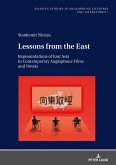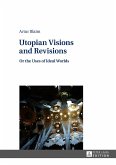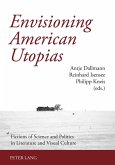What is Cli-Fi?
Climate change fiction is a new literary phenomenon that emerged at the turn of the twenty-first century in response to what may be society's greatest challenge. Climate change is already part responsible for extreme weather events, flooding, desertification and sea level rise, leading to famine, the spread of disease, and population displacement. Cli-fi novels and films are typically set in the future, telling of disaster and its effect on humans, or they depict the present, beset by dilemmas, conflicts or conspiracies, and pointing to grave consequences. At their heart are ethical and political questions: will humankind rise to the challenge of acting collectively, in the interest of the future? What sacrifices will be necessary, and is a green dictatorship our only hope for survival as a species?
Each chapter in this volume offers a way of reading a particular literary text or film, drawing attention to themes, formal features, reception, contribution to public debate, and issues for class discussion. Popular novels and films (Kim Stanley Robinson's Science in the Capitol trilogy, Michael Crichton's State of Fear, Ian McEwan's Solar, and The Day after Tomorrow) are examined alongside lesser known writing (for instance J. G. Ballard's «proto-climate change» novel The Drowned World and Antti Tuomainen's Finnish thriller, The Healer), and films not generally thought of as being about climate change (Frozen and Take Shelter).
The book, which includes an introduction tracing the emergence and influence of cli-fi, is directed towards general readers and film enthusiasts as well as teachers and students. Written in an accessible style, it fills the gap between academic studies and online blogs, offering a comprehensive look at this timely new genre.
Climate change fiction is a new literary phenomenon that emerged at the turn of the twenty-first century in response to what may be society's greatest challenge. Climate change is already part responsible for extreme weather events, flooding, desertification and sea level rise, leading to famine, the spread of disease, and population displacement. Cli-fi novels and films are typically set in the future, telling of disaster and its effect on humans, or they depict the present, beset by dilemmas, conflicts or conspiracies, and pointing to grave consequences. At their heart are ethical and political questions: will humankind rise to the challenge of acting collectively, in the interest of the future? What sacrifices will be necessary, and is a green dictatorship our only hope for survival as a species?
Each chapter in this volume offers a way of reading a particular literary text or film, drawing attention to themes, formal features, reception, contribution to public debate, and issues for class discussion. Popular novels and films (Kim Stanley Robinson's Science in the Capitol trilogy, Michael Crichton's State of Fear, Ian McEwan's Solar, and The Day after Tomorrow) are examined alongside lesser known writing (for instance J. G. Ballard's «proto-climate change» novel The Drowned World and Antti Tuomainen's Finnish thriller, The Healer), and films not generally thought of as being about climate change (Frozen and Take Shelter).
The book, which includes an introduction tracing the emergence and influence of cli-fi, is directed towards general readers and film enthusiasts as well as teachers and students. Written in an accessible style, it fills the gap between academic studies and online blogs, offering a comprehensive look at this timely new genre.









